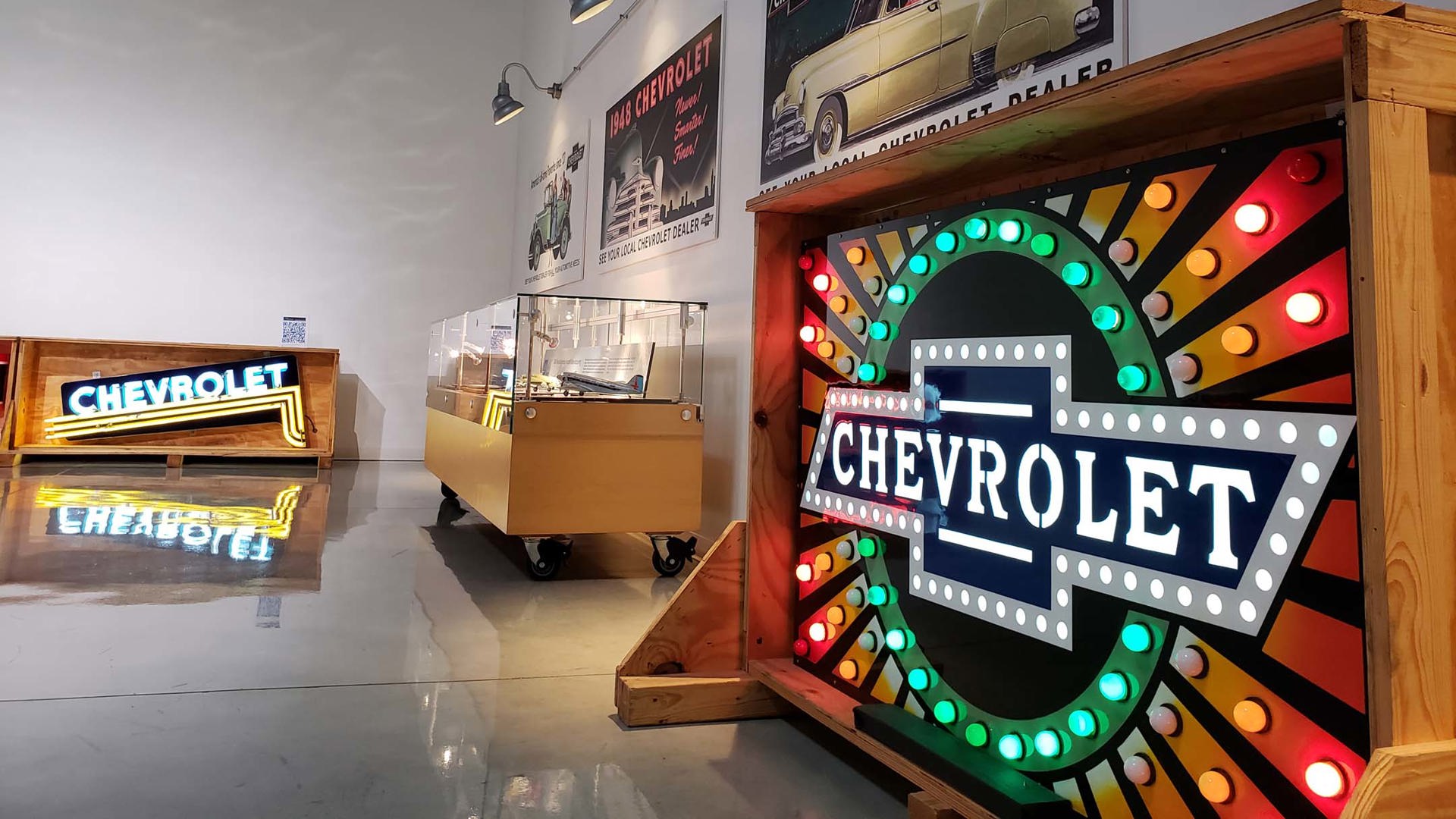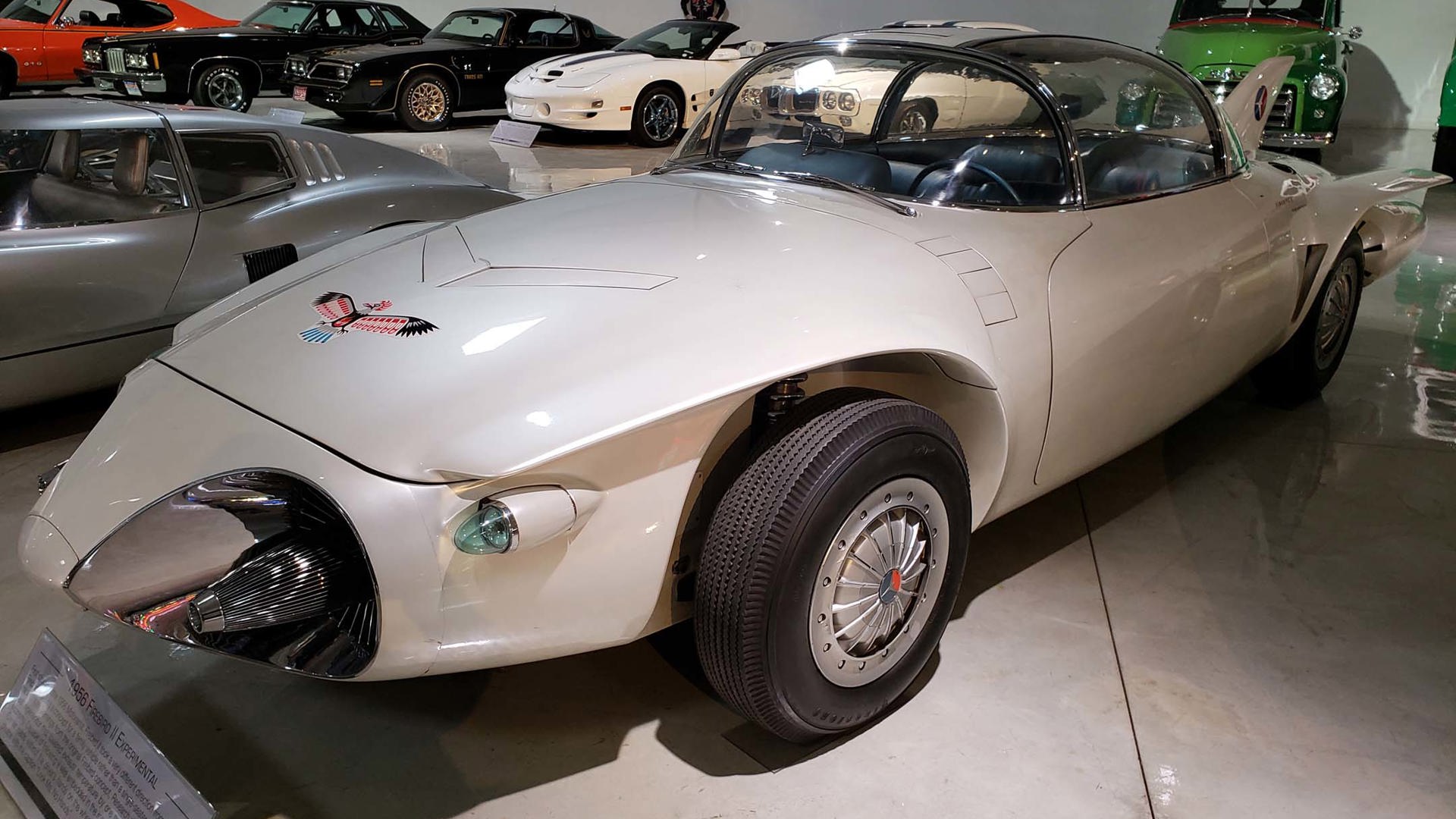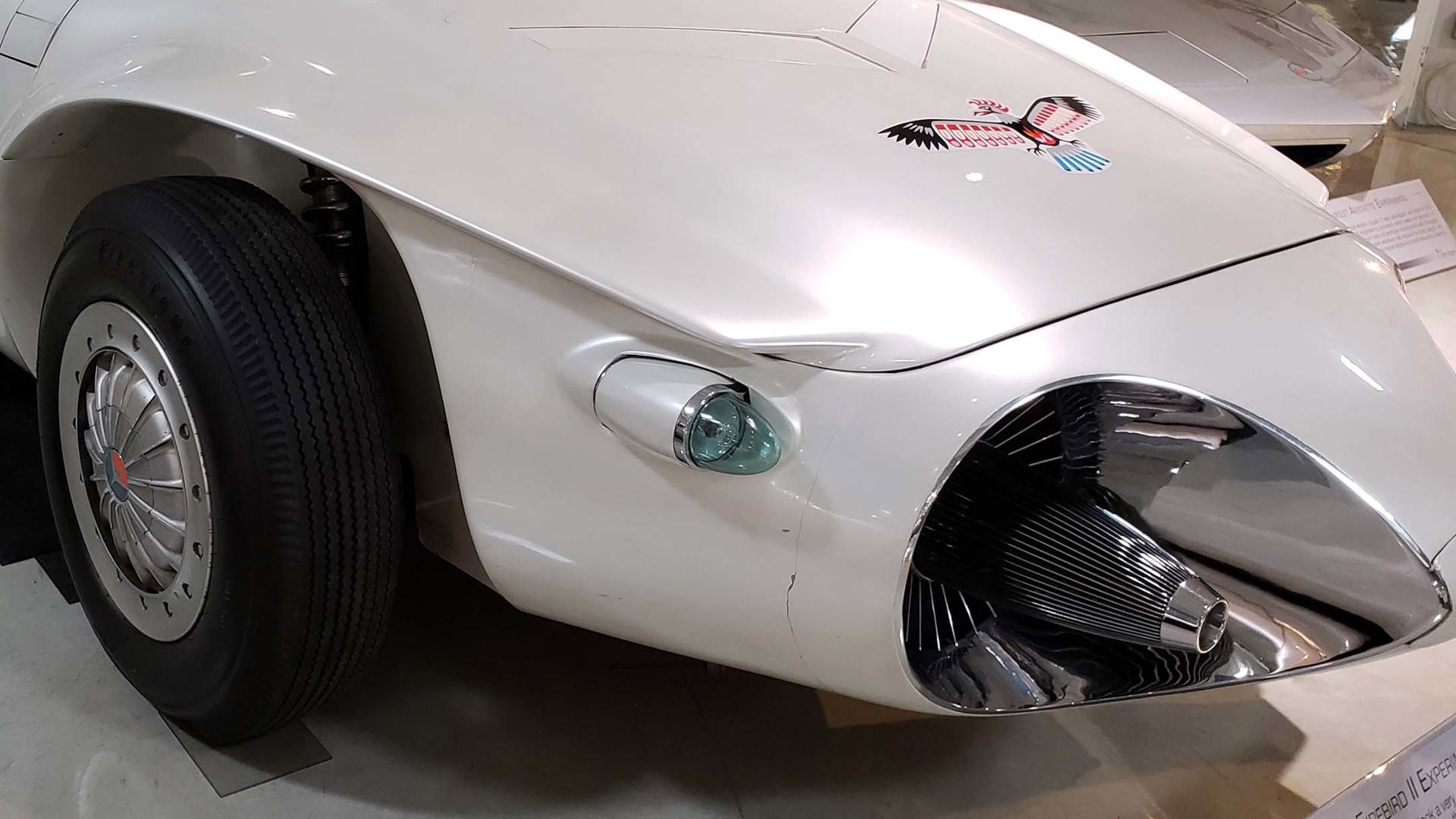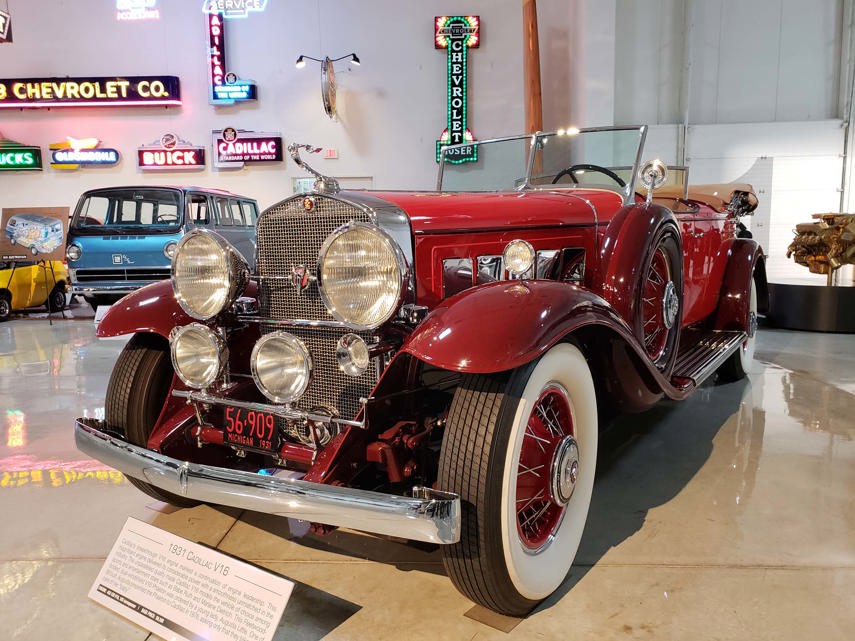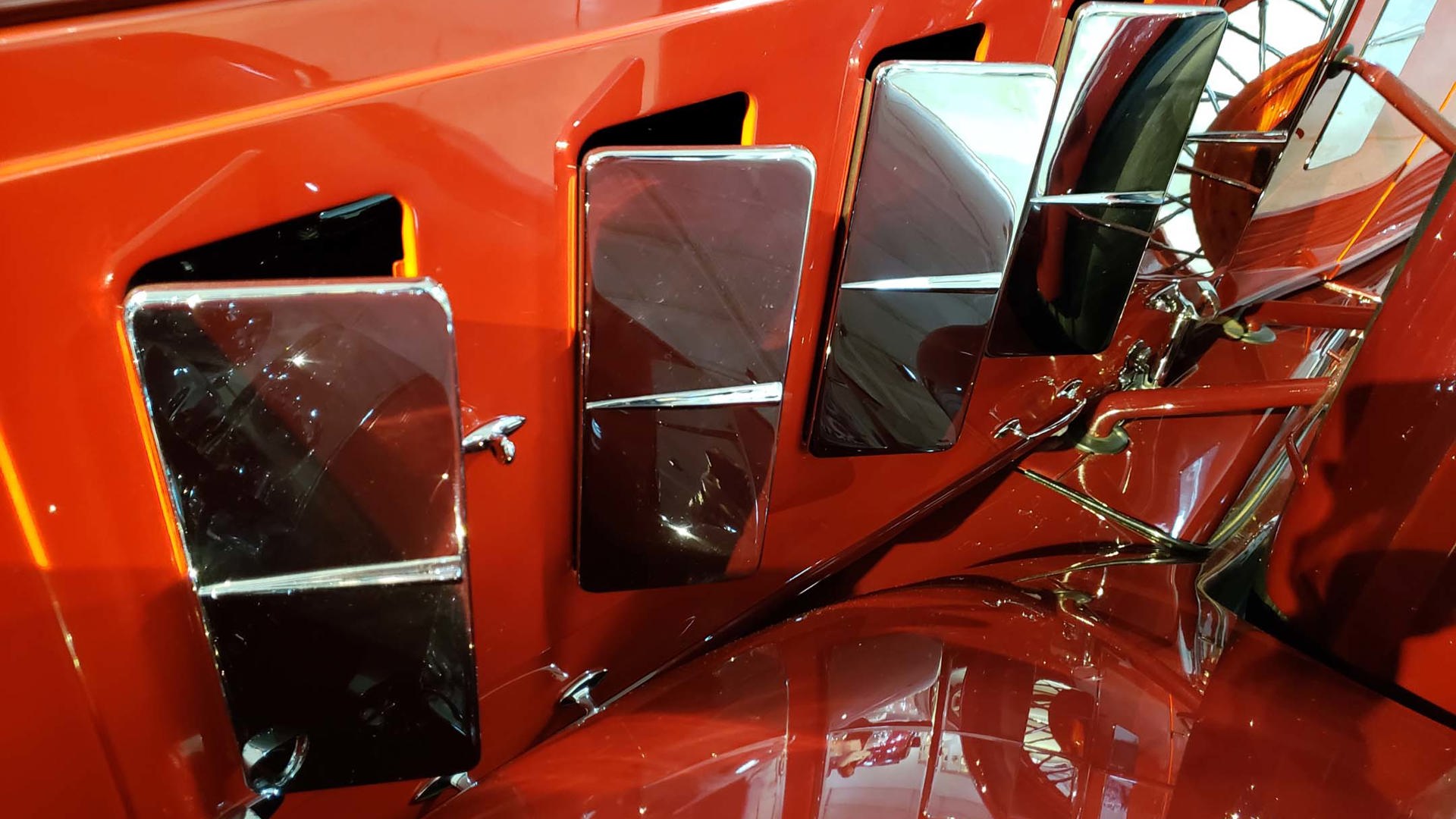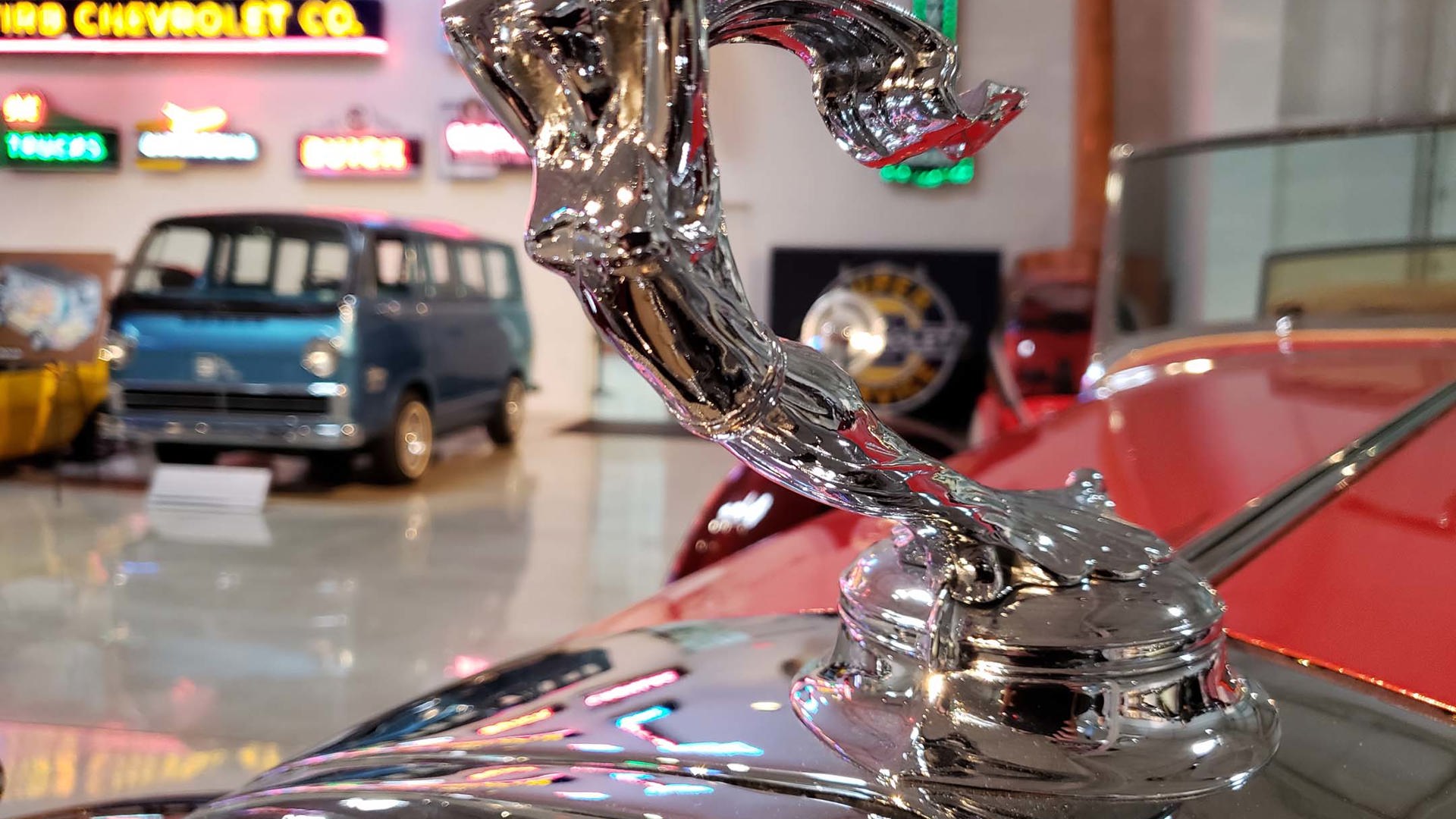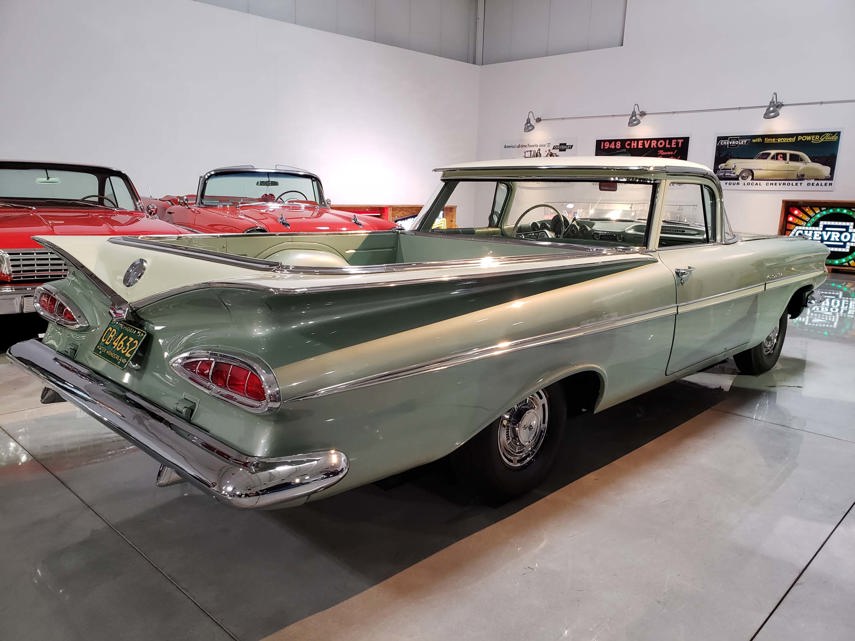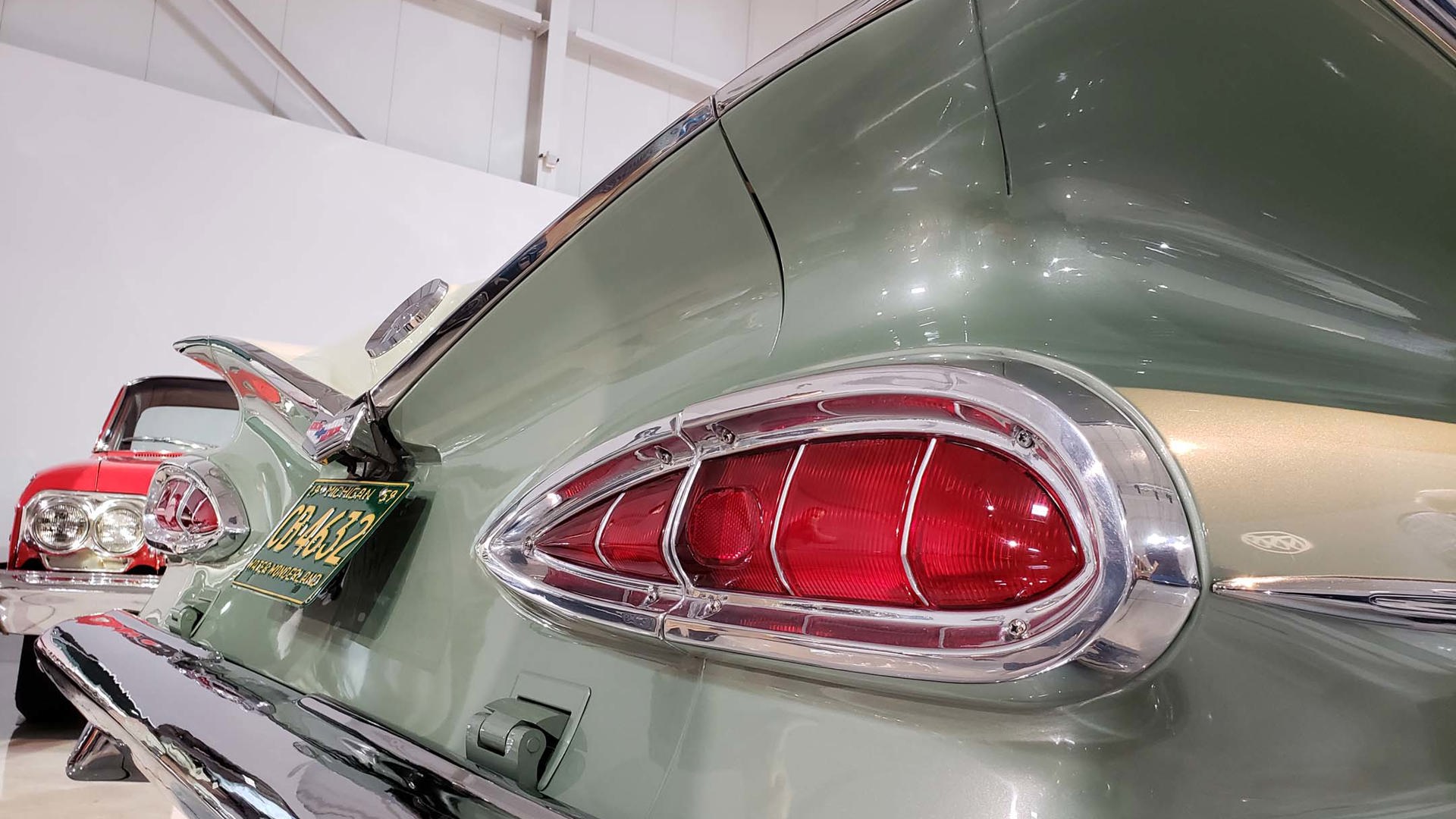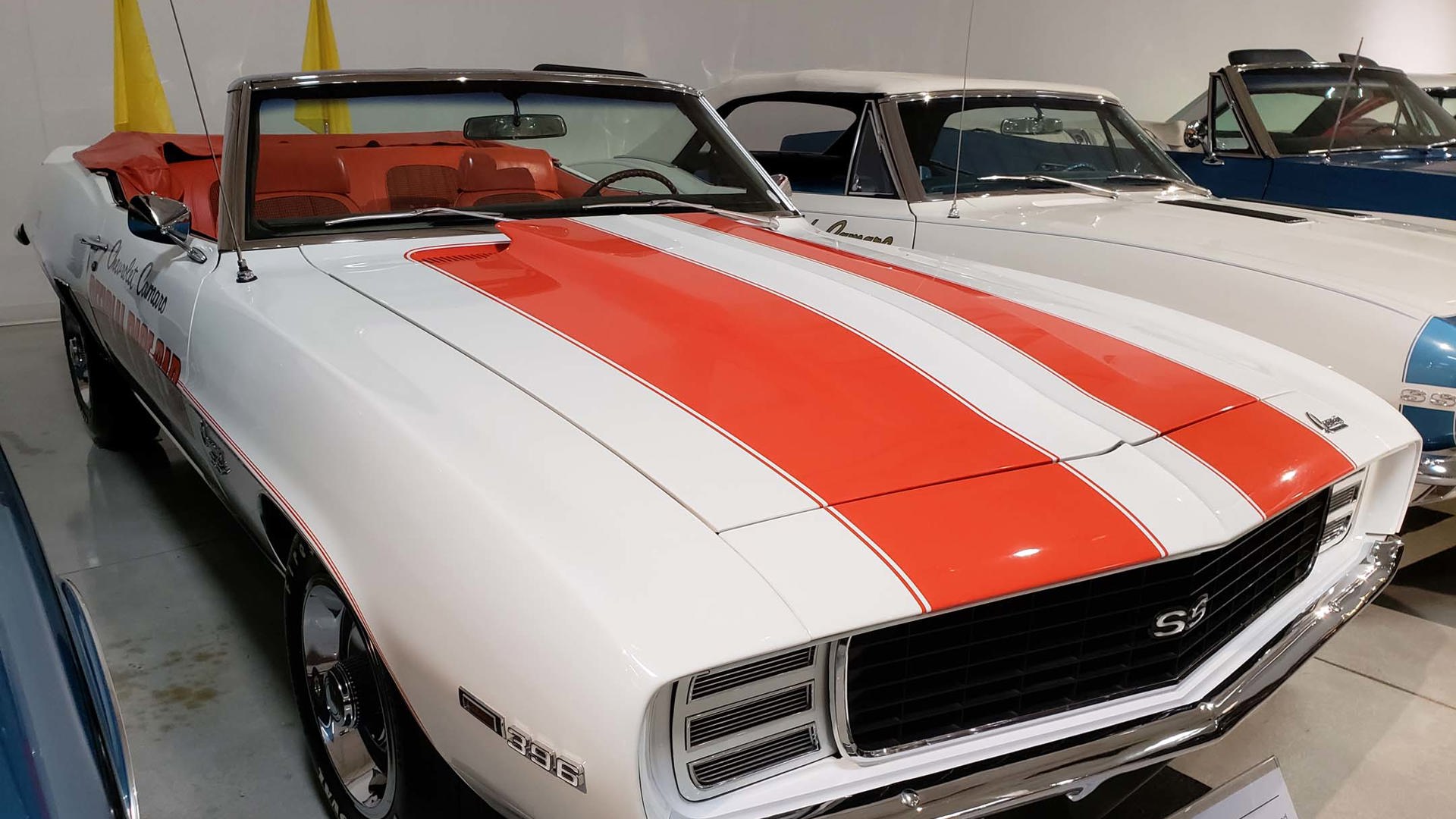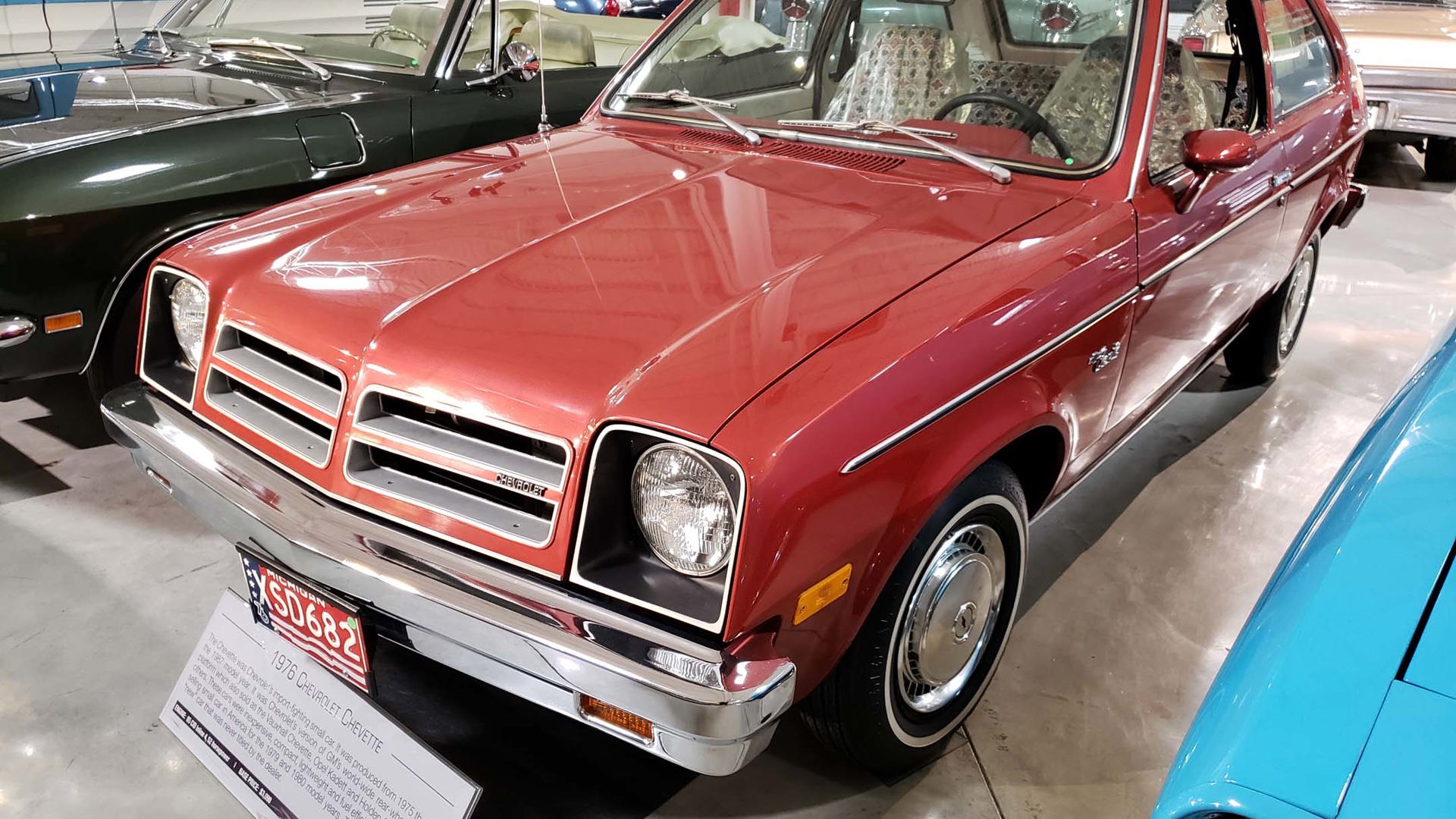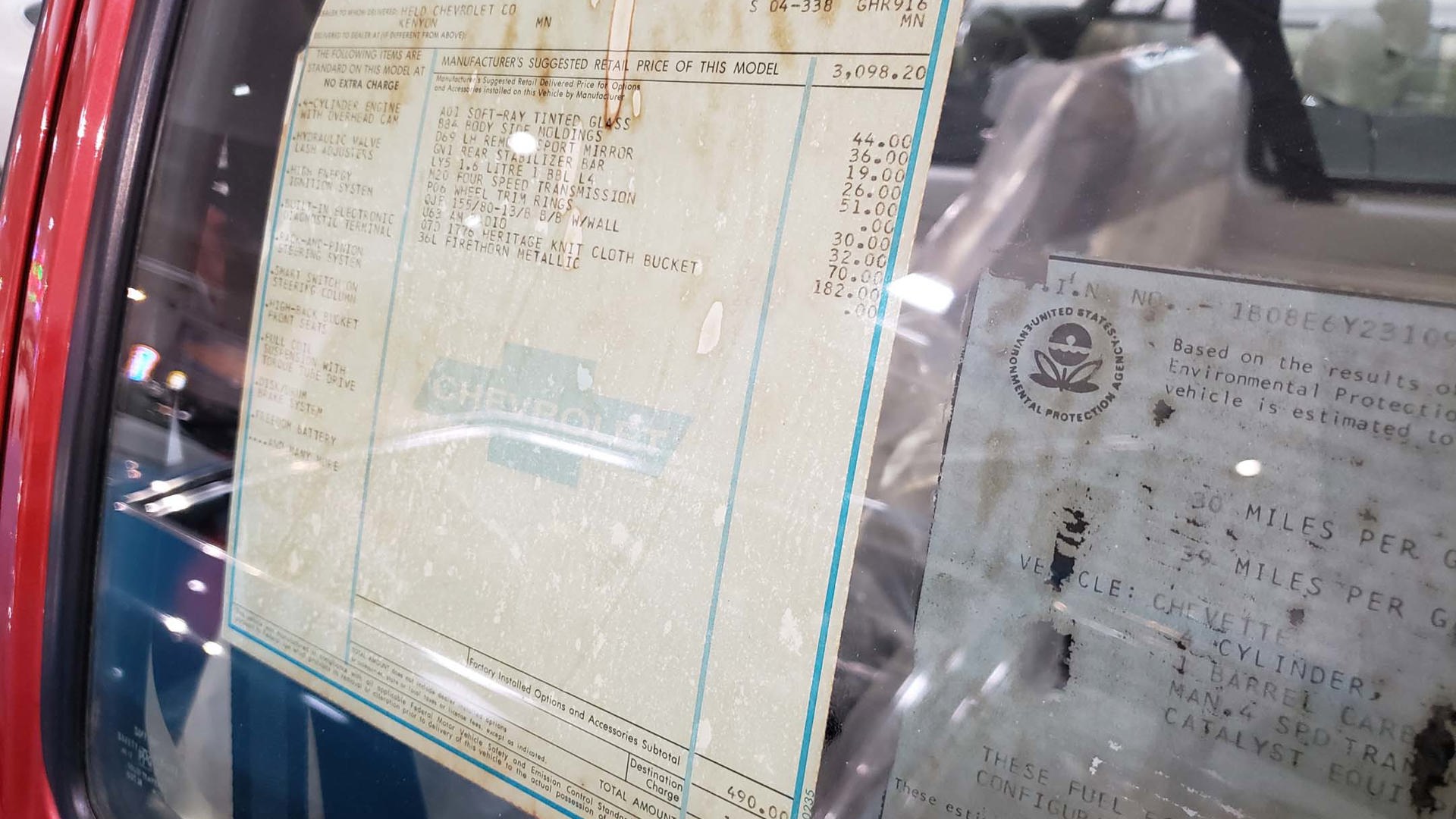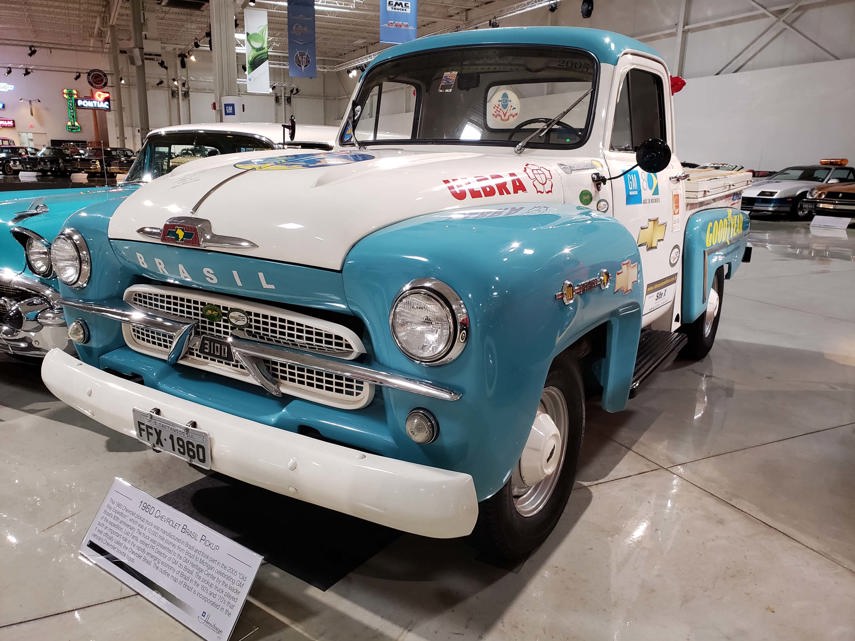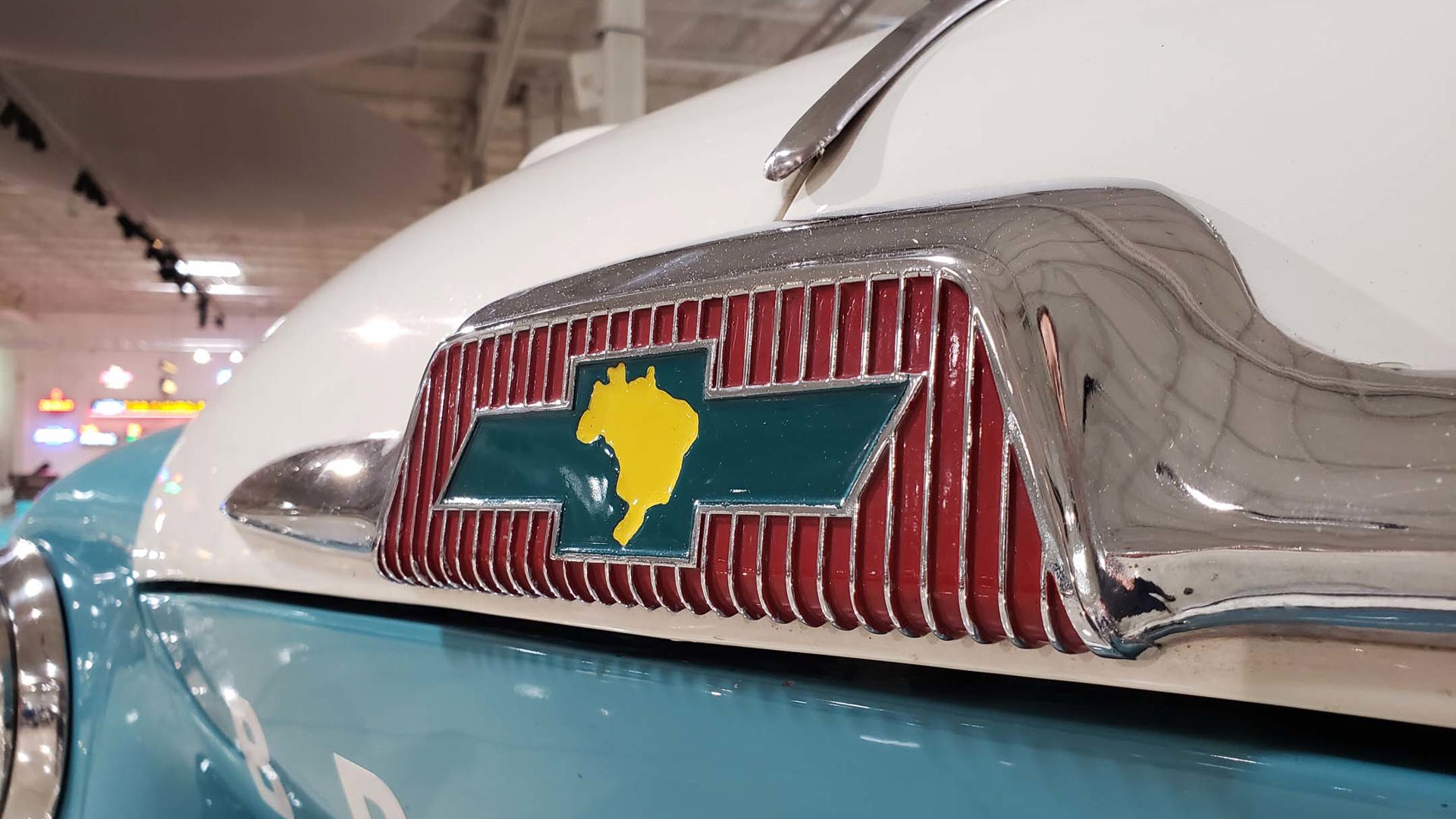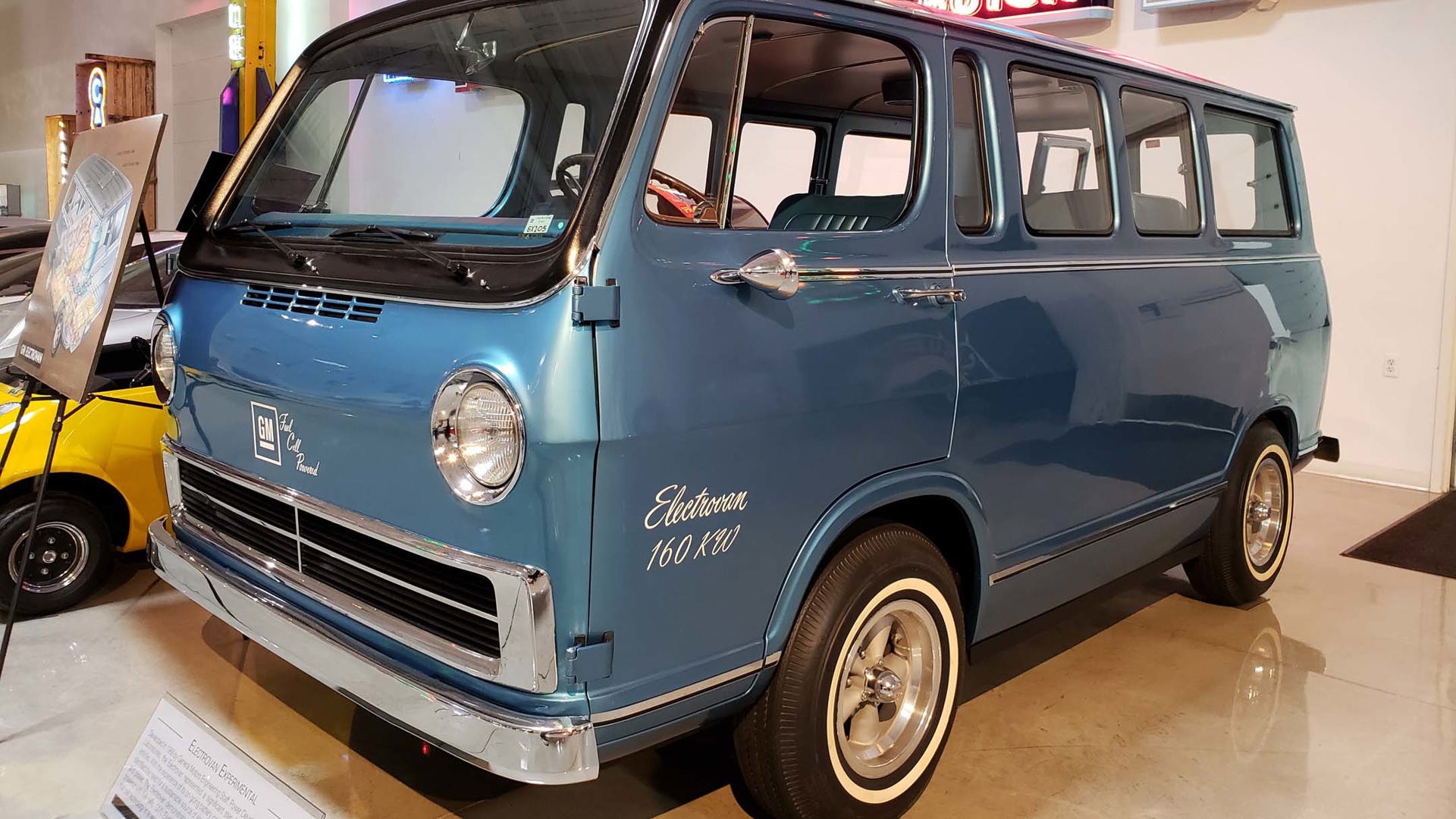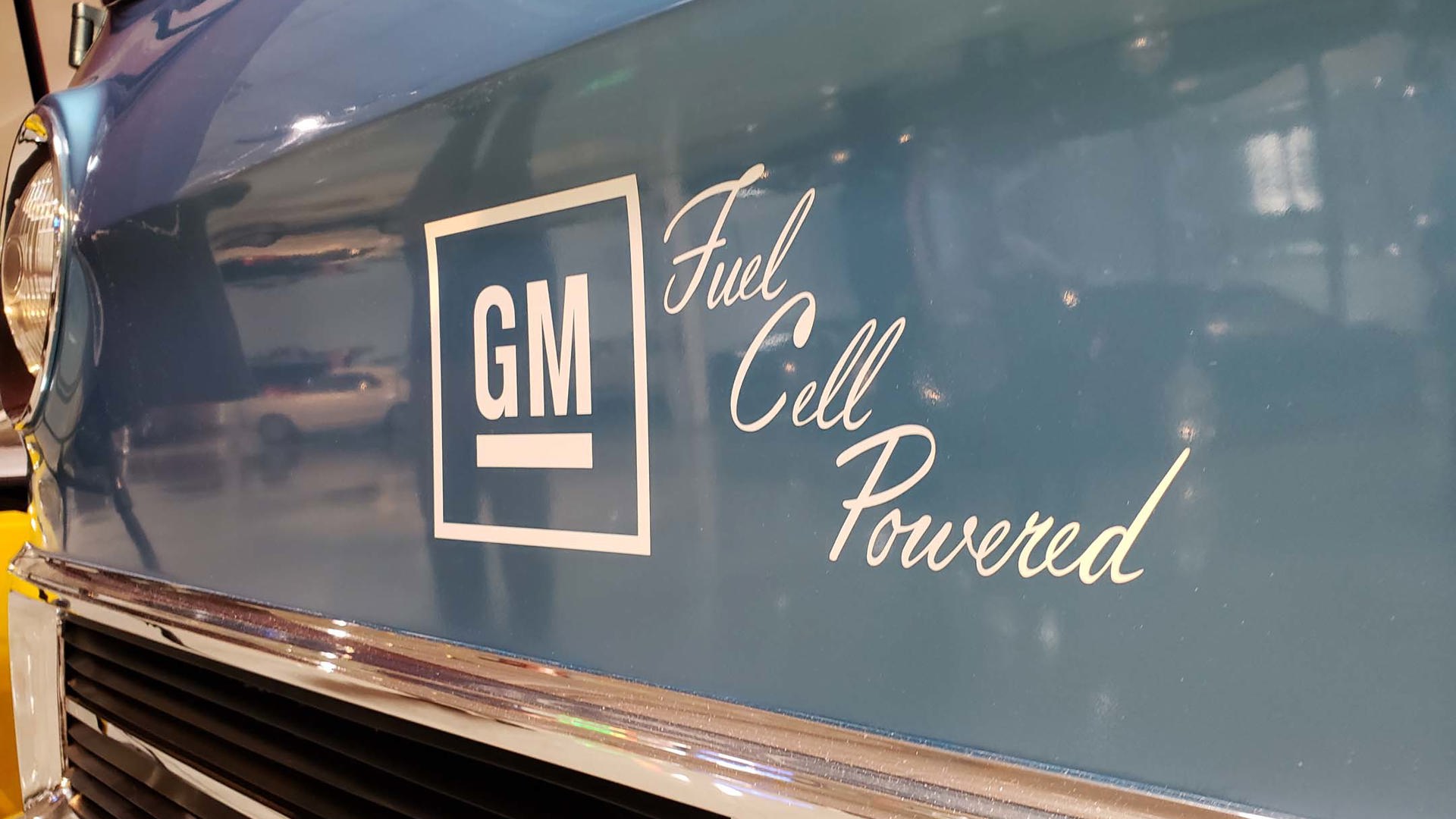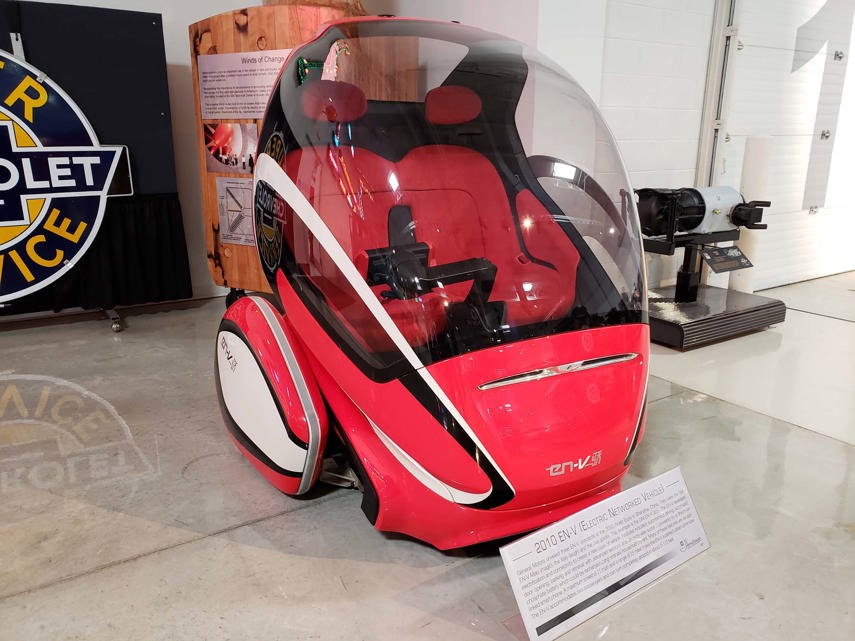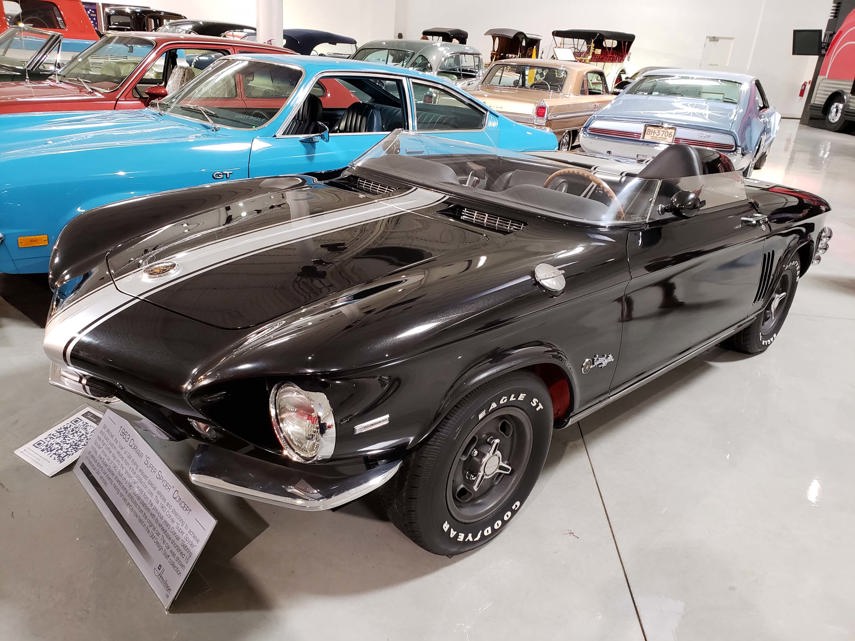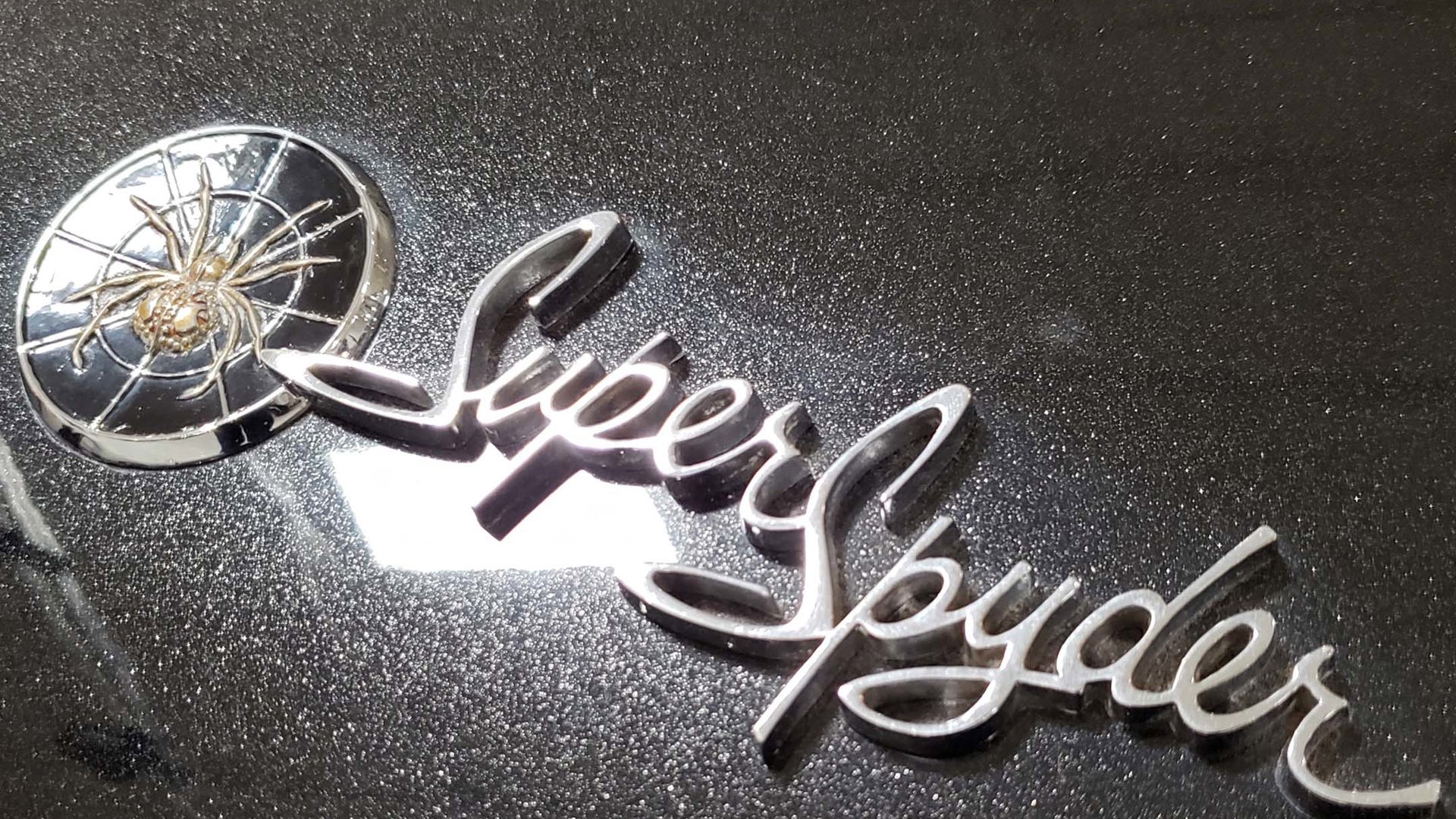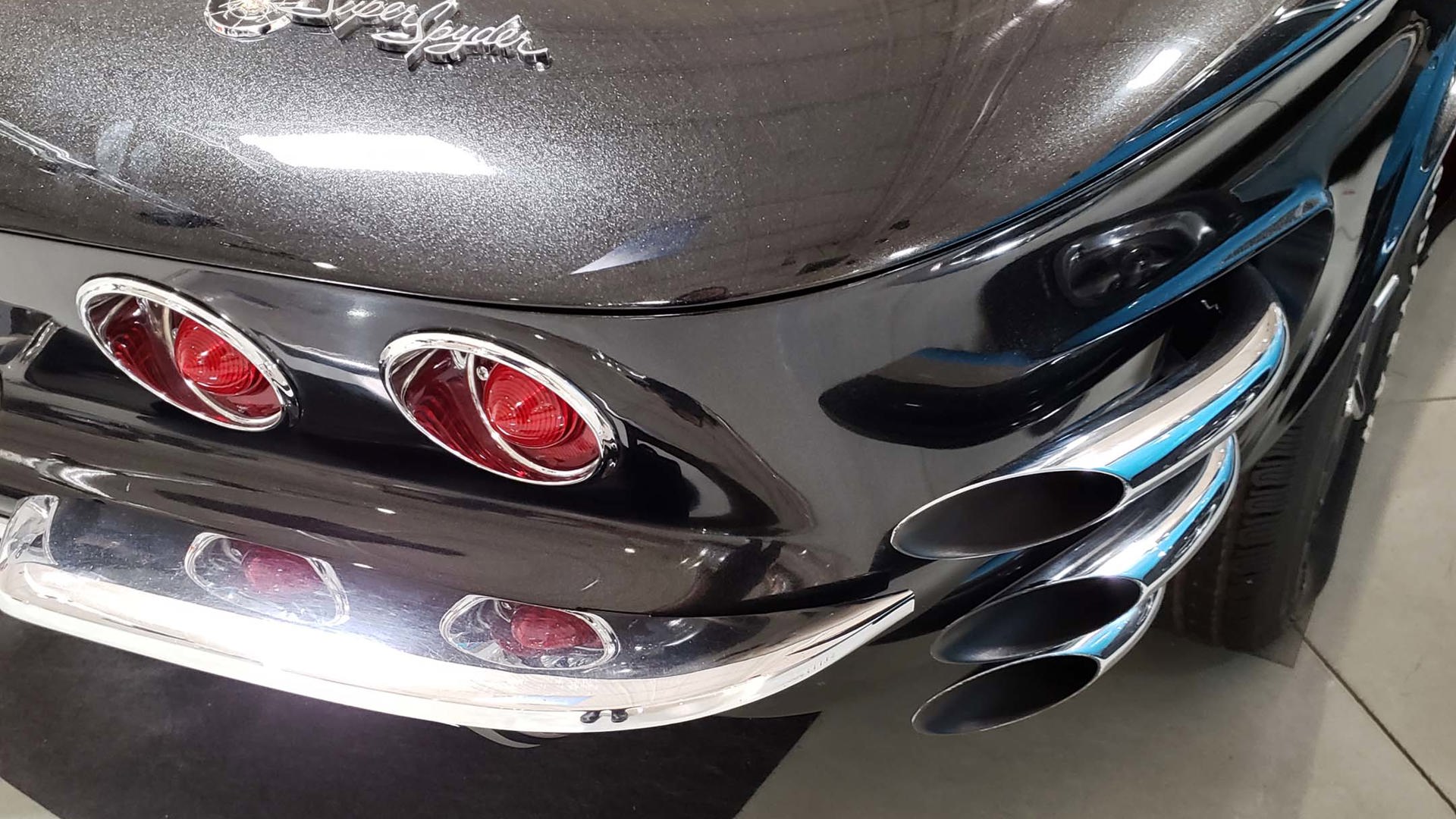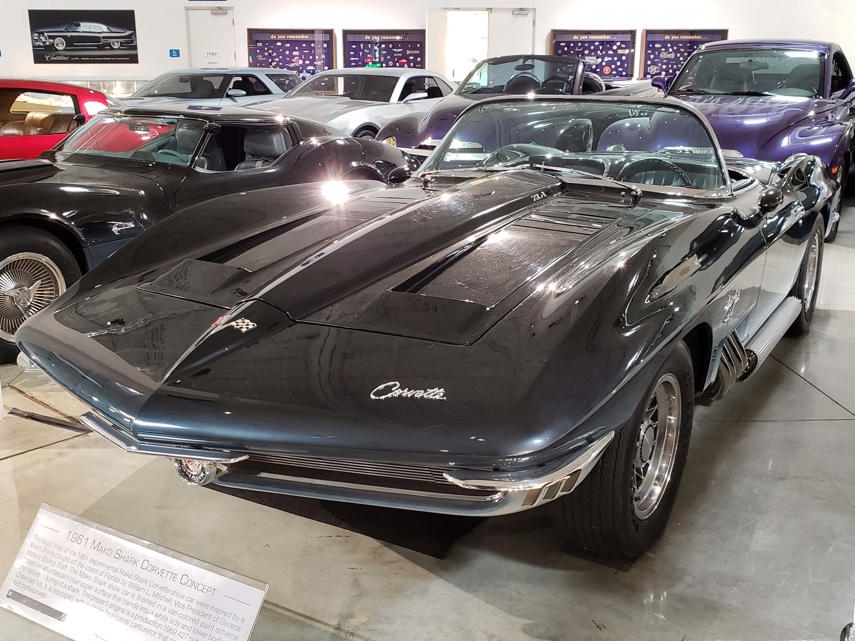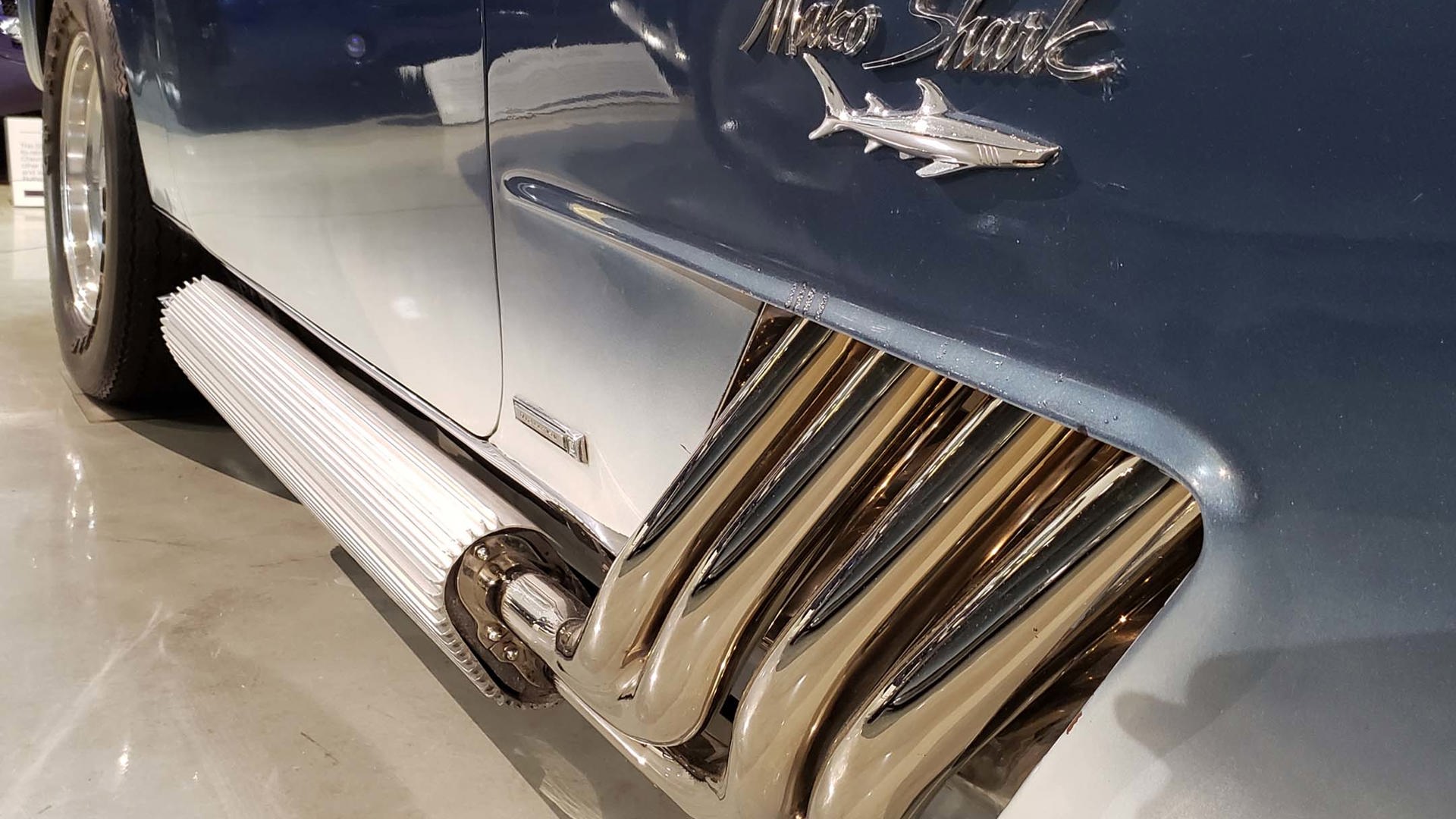The volume and stratum of automotive history and art that’s on display at the General Motors Heritage Center in Sterling Heights, Michigan, is enough to bring even seasoned enthusiasts to their knees. But viewing it isn’t easy: it’s not open to the general public.
That’s not to say that you can’t get access, though. You’ll just have to gather yourself and at least 29 of your closest family and friends and pay $10 each for a prearranged weekday tour. Private events such as meetings, conferences, and cocktail parties can be set up as well, albeit at a higher price.
Is it worth the effort? For whole-hearted GM fans and those who appreciate America’s historic love affair with the automobile, absolutely. While one’s initial reaction may be tinged with disappointment – we came all this way for one room? – the enormity of what’s assembled here doesn’t take long to sink in. There are 165 cars on display at any given time, rotating out of a complete collection of nearly 700, each with its own story and unique place in the foundation of General Motors and the golden age of motoring in North America.
Here’s a closer look at 10 cars that are currently on display, selected here not because they’re collector standouts or the best eye candy but because they have compelling back stories worth telling.
(By the way, cars are just one portion of what you’ll find at the Heritage Center. There are classic neon signs, walls full of pristine badges, and in the back corner, a dozen or so historic engines are in the open on full display. You could probably camp here for days and still not run out of new things to ogle at.)
1956 Firebird II
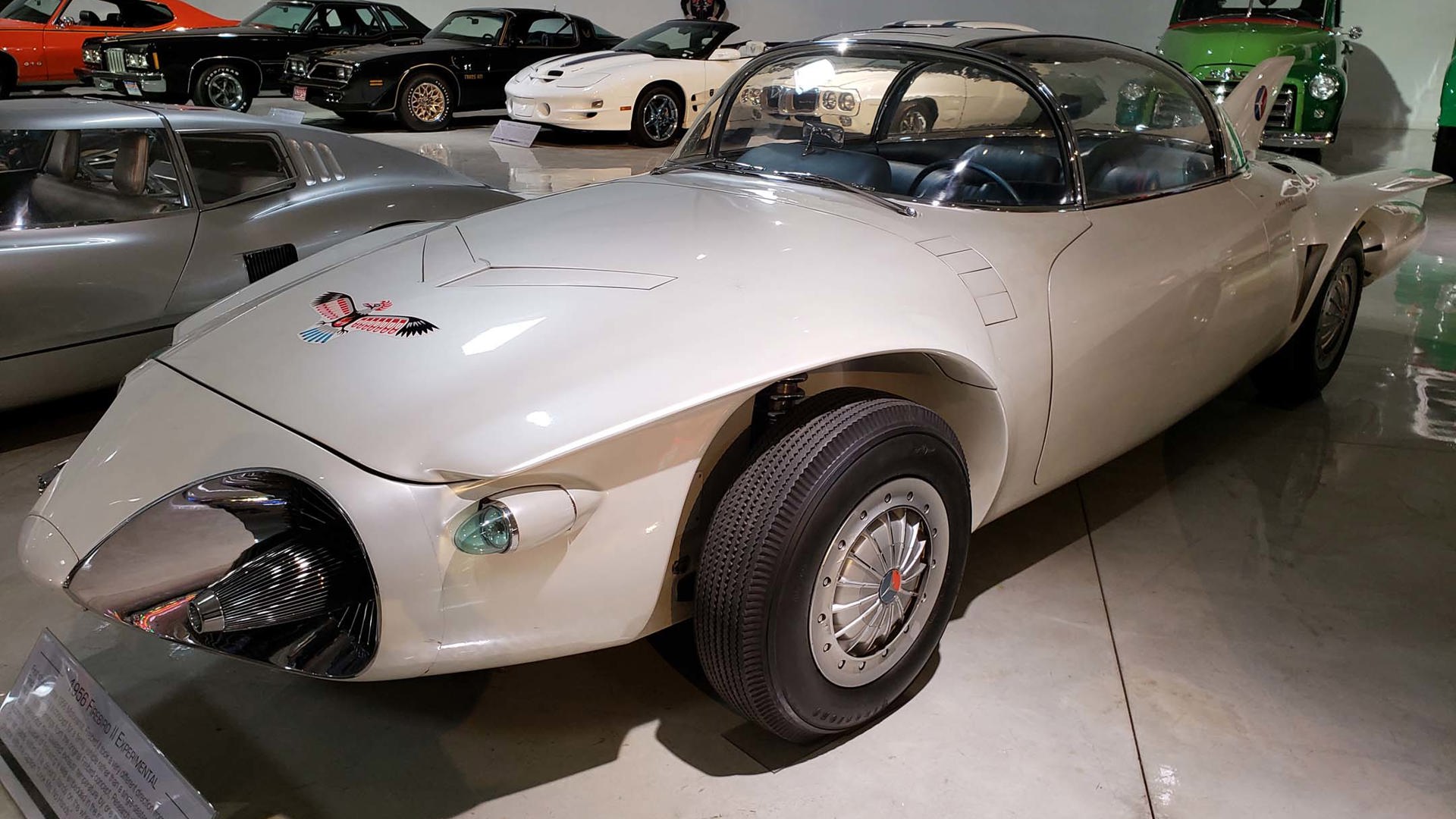
The second I laid eyes on this car, I knew exactly where I’d seen the fabulous turbine-powered Firebird II before: this was the piece de resistance, purportedly “designed for the electronic highway of the future,” in a short film from 1956 produced by General Motors called Design for Dreaming. I know it not from its original release but for being subsequently riffed upon mercilessly by some of the greatest known practitioners of sardonic humour, the cast of Mystery Science Theater 3000. (Links to the short, with or without MST3K commentary, are readily available on YouTube for those who appreciate quality mid-century kitsch.)
Apart from epitomizing the quintessential bubble-top and tail-fin-fantastical ideals of the era, the Firebird II also housed a prototype for an electronic guidance system. In the 1950s, traffic on the highways of the future would be overseen by control towers that drivers would contact by reaching overhead to press a button – previewing the eventual position of the OnStar button, all the way back in 1956.
1931 Cadillac V16
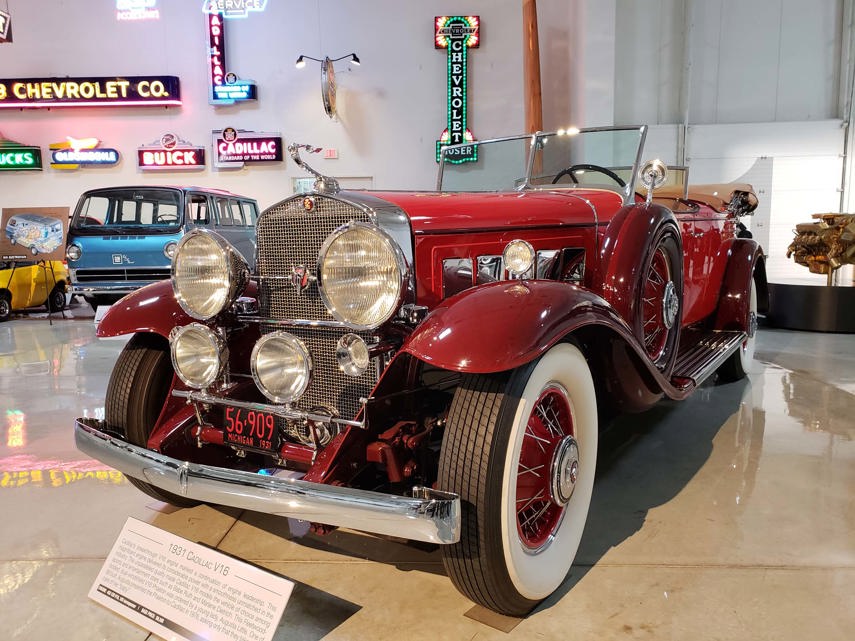
The unfortunate timing of launching America’s first V16 engine right as the Great Depression hit had the side effect of keeping this highly expensive car – with a base price of $6,500, or the equivalent of just over $100,000 in today’s dollars – just as highly exclusive. According to the Heritage Center, V16s were owned by the likes of Babe Ruth and Marlene Dietrich.
This precise example was owned by one Augusta Little, who came into a sizeable inheritance as a teenager and purchased this and a private plane, both of which she had painted in the same shade of red. She enjoyed it for decades before eventually selling it back to General Motors for the princely sum of $1, requesting only that the company take good care of her baby.
1959 Chevrolet El Camino
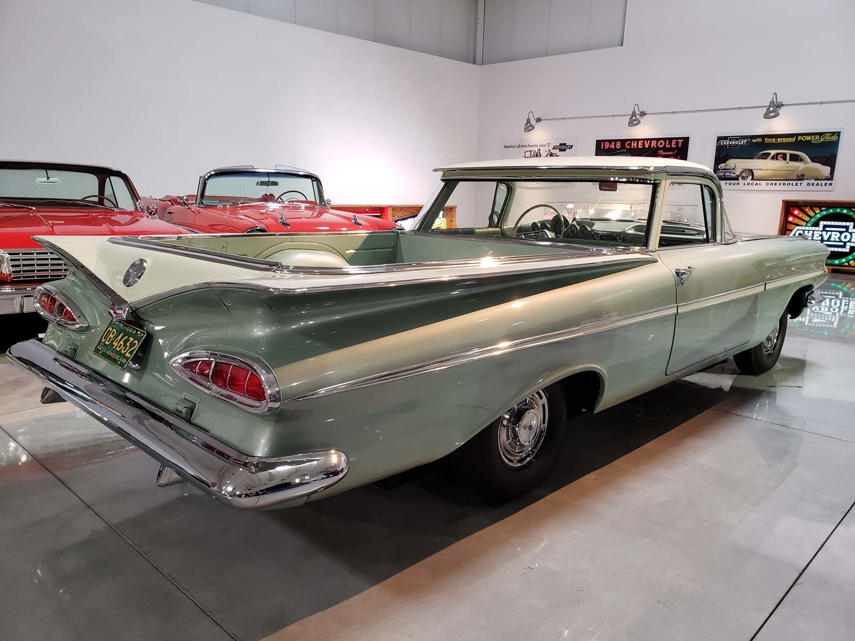
We’re back to the 1950s now, when the post-war economy is booming, families are moving to the suburbs in droves, and two-car garages are becoming the norm. The automotive industry begins to realize that women are becoming decision-makers in the car-buying process and is trying to figure out how to capture their attention. Harley Earl, the first person formally put in charge of design for General Motors, decides there’s no better way to appeal to women than to get their input into the look and feel of cars from the outset. He hires nine women and disperses them to work in design departments throughout GM’s brands, leading to their collective nickname, the Damsels of Design.
The Heritage Center’s Peggy Vezina says that the gullwing design on the back of this 1959 Chevrolet El Camino is a prime example of the feminine influence that the Damsels of Design imparted in their time. This would have been one of the later instances; Earl retired in 1958, and under his successor Bill Mitchell, most of the Damsels left the company.
1967 and 1969 Chevrolet Camaro Indianapolis 500 Pace Cars
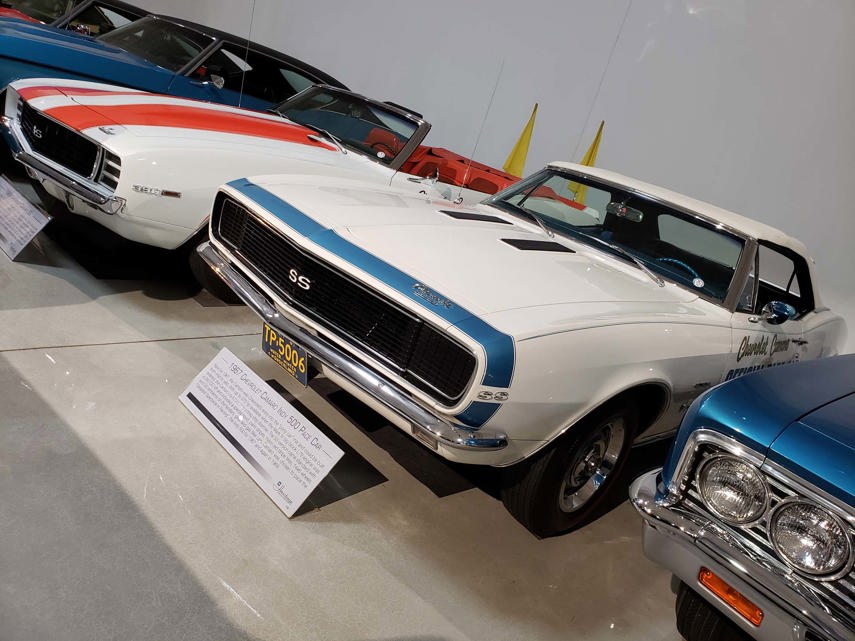
The Chevrolet Corvette may have had more appearances as the pace car for the Indianapolis 500 than any other model in history, but the Camaro beat it to the punch – it appeared in both the launch model year in 1967 (right), driven then by three-time 500 winner Mauri Rose, and again in 1969 (left), driven by 1960 race winner Jim Rathmann, long before the first Corvette was first featured in 1978.
However, the Camaro wasn’t the first Chevrolet-branded pace car. That was the Chevrolet Fleetmaster, which paced the 33 competitors in 1948 at the hands of another three-time winner, Wilbur Shaw. But if we really want to play fast and loose, that’s still not the first time the name Chevrolet was associated with doing the honours: in 1926, Louis Chevrolet himself led the field at the wheel of a Chrysler Imperial E-80.
1976 Chevrolet Chevette
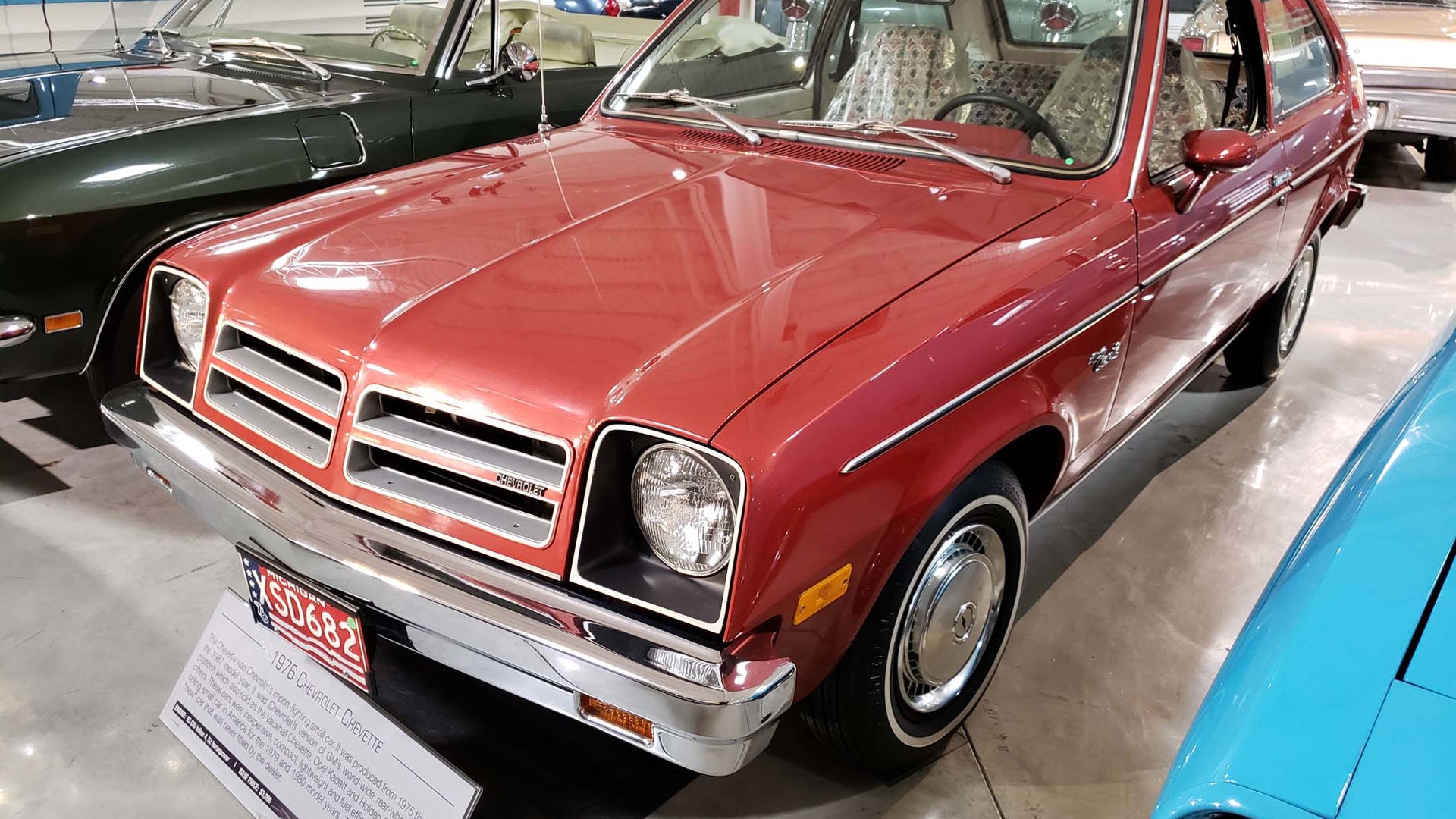
As the best-selling small car in America in 1979 and 1980, the Chevrolet Chevette is hardly a rare sight in and of itself. But the specific car that’s in the Heritage Center’s collection has a couple of things about it that are pretty neat. For one, it was never titled by the dealer that had it, which means that the window sticker is still in tact and legible – a sight that makes for a fair rush of nostalgia in people my age or older.
On top of that, this is a 1976 model year unit. Chevrolet honoured the American bicentennial with, as some colleagues pointed out to me, an upholstery that’s truly spectacular (in the most liberal sense of the word) called “1776 Heritage Knit”. This unique offering was a $182 option – or roughly $800 today.
1960 Chevrolet Brasil Pick-up
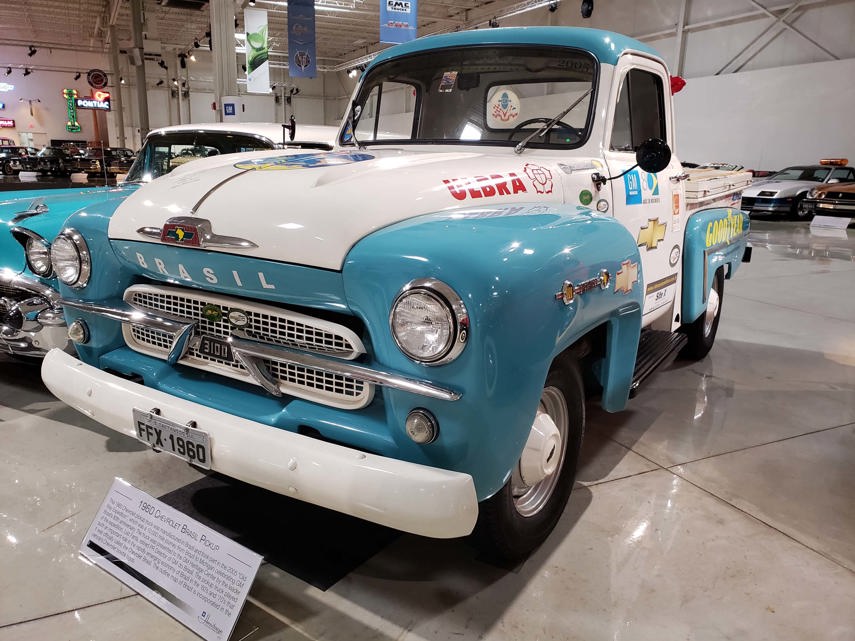
When we’re told this truck was driven all the way to the Heritage Center from Brazil – not on a flatbed but on its own four wheels – I’m left with so many questions. Why would anyone do this? How did it get across the Darien Gap, a 90-kilometre stretch across the Panama–Colombia border where the Pan-American Highway is incomplete and swamps, thick rainforest, drug dealers, and insurgents make passage all but impossible? And how did they keep the truck in one piece over such a roughshod 16,000 km journey?
A GM press release from 2005 unearths some answers. This truck was one of three that set out from Manaus, Brazil, on September 1 of that year on a trip dubbed the Old Way Expedition and undertaken to honour the 80th anniversary of General Motors’ presence in Brazil. There were some trials and tribulations – stolen gas, leaky brake lines, a police escort through a portion of the Amazon to prevent attack from Aboriginal tribes – but the trucks arrived in mid-October so that this piece could be presented to the Heritage Center by retired GM do Brazil PR director Luiz Fanfa. They avoided the Darien by shipping the trucks by sea and flying from Colombia to Panama to meet them – and they waited nine days for them to arrive due to customs, drug inspections, and Hurricane Katrina. That’s some serious dedication.
Electrovan Experimental
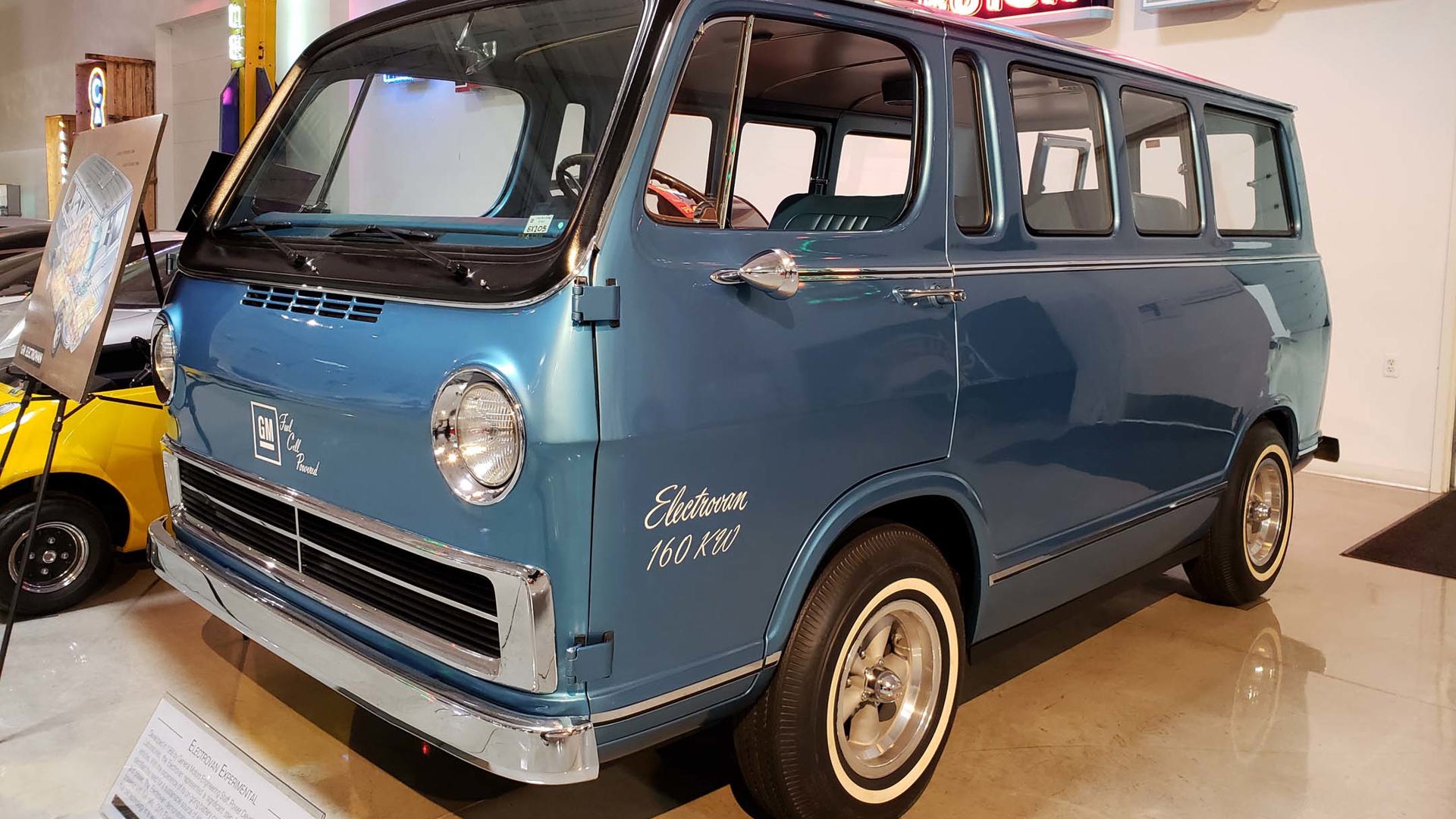
There’s so much talk around hydrogen fuel cell power these days that it’s easy to forget the technology has been around for decades. This van was the subject of the world’s first application of fuel cells in passenger vehicle propulsion, developed by General Motors in 1966. According to Vezina, faith in the technology wasn’t especially high at the time: while in motion, the van was often followed by a fire engine.
2010 EN-V
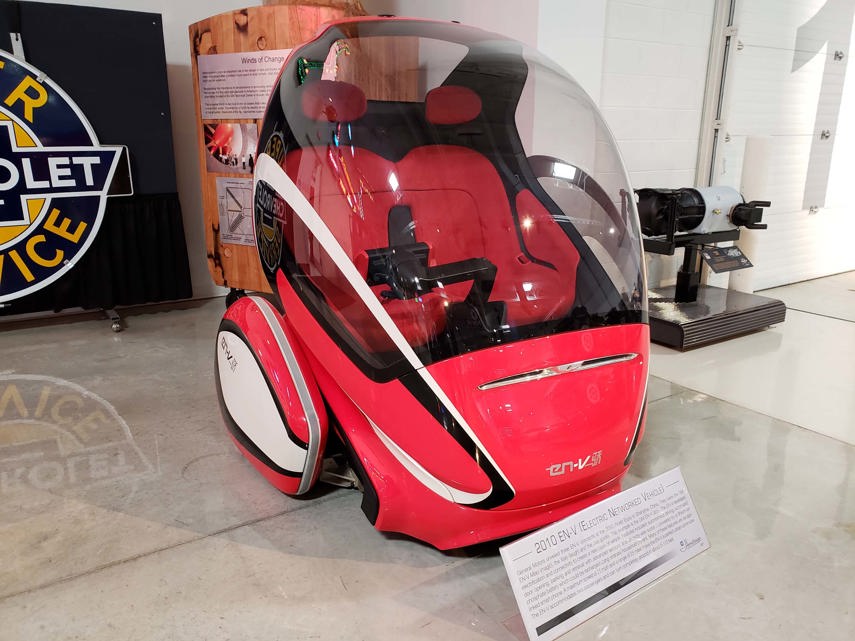
Continuing on the alternative fuels theme, this little guy is the EN-V Jiao, which translates to “pride”. It’s one of three electric-powered, autonomous driving concepts shown at the 2010 World Expo in Shanghai, the other two being Xiao (laugh) and Miao (magic). All three of them feature two electric motors, one at each wheel, and balancing technology developed by Segway, along with early concepts for technologies still under development today such as vehicle-to-vehicle communication and automated parking and retrieval. In Jiao, the steering mechanism can be moved back and forth between the two passenger seats, and the design was developed by Opel in Europe to evoke the masks used in Chinese opera.
1963 Corvair Super Spyder Concept
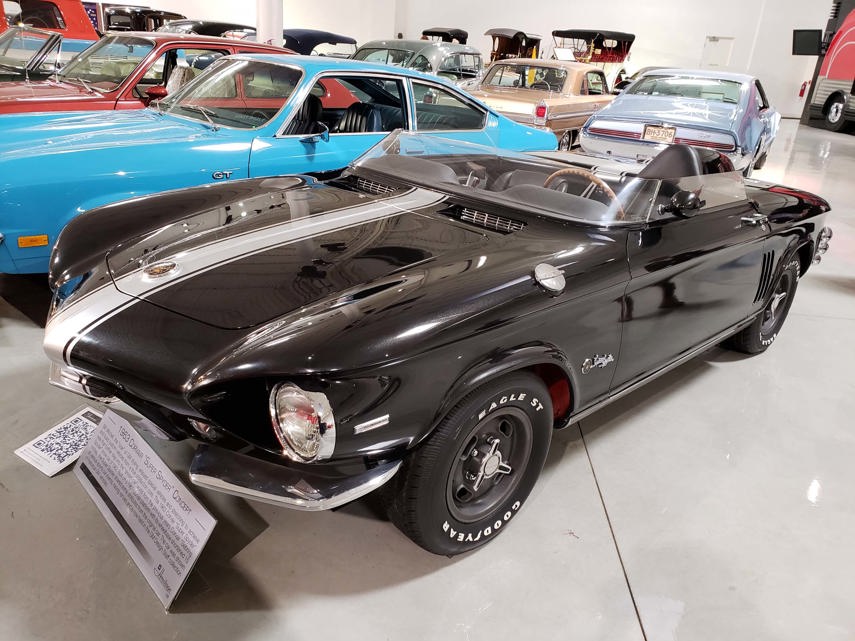
A trip to the Heritage Center would be wasted without digging into some of Bill Mitchell’s design experimentation. This is one of the Corvair concepts that traced his journey to the nameplate’s second-generation look that came to fruition for the 1965 model year. Based on a 1961 Corvair but with a shortened wheelbase, it has a four-wheel independent suspension system and a rear-mounted, horizontally opposed six-cylinder engine. The intricate badging and curved chrome exhaust tips are among the many eye-catching details.
1961 Mako Shark Corvette Concept
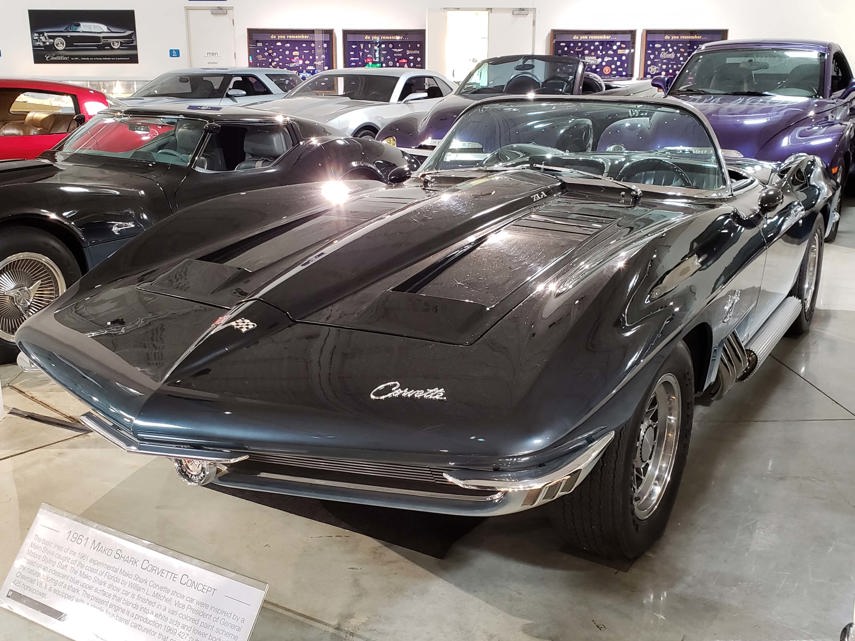
There are plenty of special ’Vettes at the National Corvette Museum in Bowling Green, Kentucky, and since that’s open to the public, they’re much easier to access. But there’s an entire row of unique examples in the GM Heritage Center as well, including this Mako Shark Concept from 1961. Bill Mitchell was an avid fisherman, so the story goes, and once caught a mako shark off the coast of Florida. This concept incorporates inspiration from that shark, including the shape of the snout and the gradation in the paint, while also pulling forward elements from the 1959 Corvette XP-87 Stingray Racer. Much of what went into the Mako Shark Concept went into production in the 1963 Corvette.
